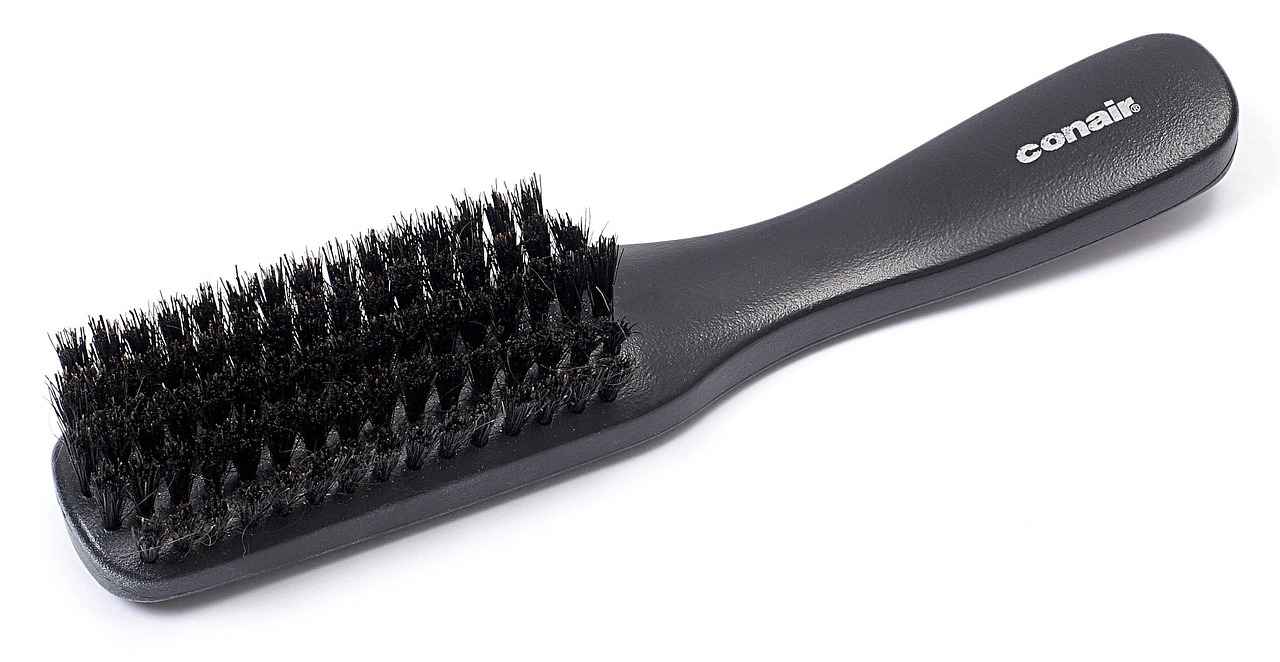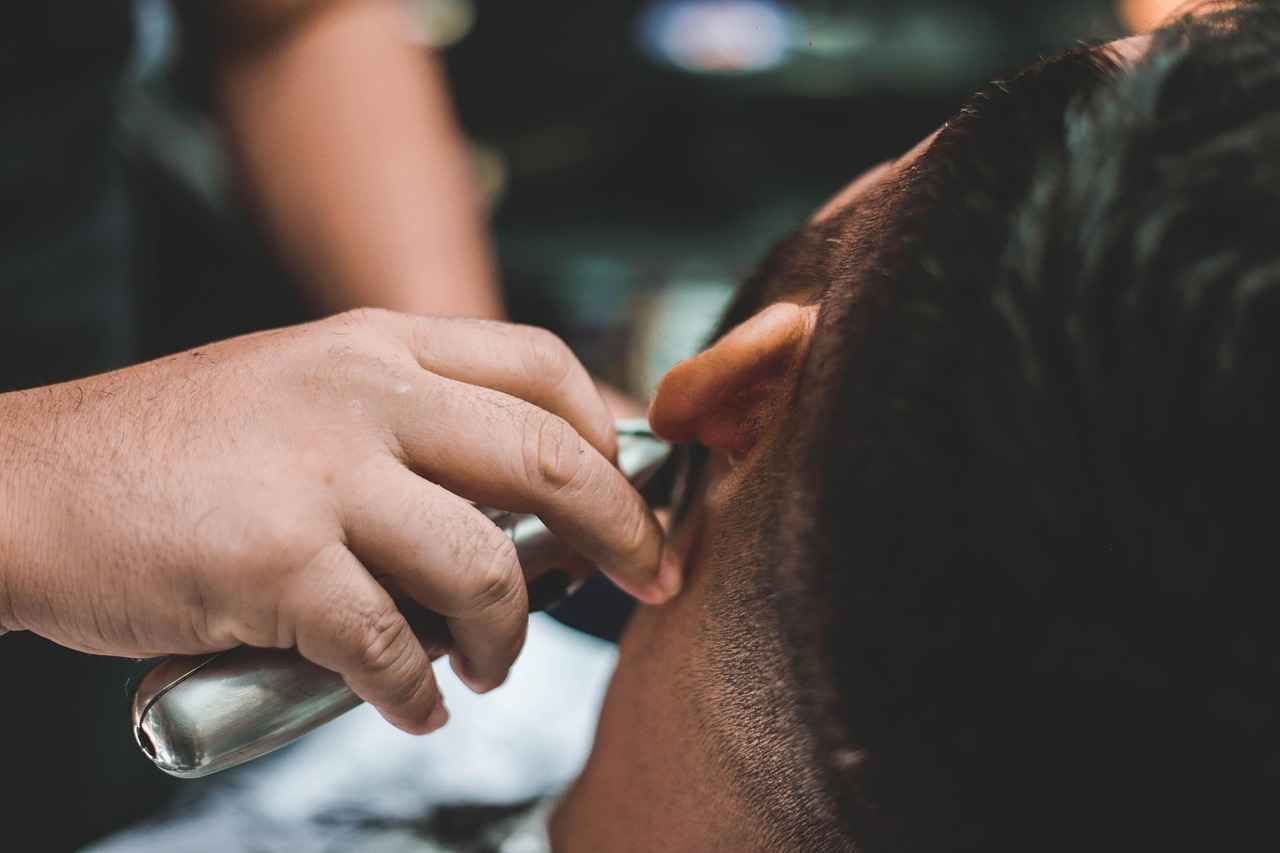This article delves into the potential complications and risks associated with hair transplants, offering insights into what can go wrong, how to address these issues, and tips for a successful procedure.
Understanding Hair Transplant Procedures
Before discussing complications, it’s essential to understand the two primary methods of hair transplantation: Follicular Unit Transplantation (FUT) and Follicular Unit Extraction (FUE). Both techniques involve the transfer of hair follicles to areas of thinning or balding, but they differ in their approach, which can influence the outcome and associated risks.
Common Complications After Hair Transplants
- Infection: Infections can occur at either the donor or recipient sites, leading to significant issues if not addressed promptly.
- Scarring: Scarring is a common concern, with variations in appearance depending on the technique used.
- Unnatural Hair Growth Patterns: Occasionally, hair may grow in directions or densities that appear unnatural.
Infections and Their Impact
Infections can manifest as redness, swelling, or discharge. Recognizing these symptoms early is crucial for effective treatment.
Signs of Infection to Watch For
- Redness around the surgical site
- Increased swelling
- Pus or unusual discharge
Treatment Options for Infections
Antibiotics and proper wound care are essential for managing infections. Patients should consult their surgeon immediately if they suspect an infection.
Scarring and Its Consequences
Scarring can affect the aesthetic outcome of the procedure. Understanding the types of scars and how they can be minimized is important for patients.
Unnatural Hair Growth Patterns
Hair may sometimes grow in an unnatural direction or density due to various factors, including surgical technique. Recognizing these issues can help manage expectations.
Corrective Measures for Unnatural Growth
Options for correcting unnatural growth include additional procedures or specific styling techniques.
Psychological Impact of Hair Transplant Failures
The emotional toll of a failed hair transplant can be significant. Understanding and addressing these feelings is vital for recovery.
Coping with Emotional Distress
Patients should seek support to navigate the emotional challenges of a hair transplant gone wrong.
Preventing Hair Transplant Complications
Preventative measures are crucial for ensuring successful outcomes. Choosing a qualified surgeon and adhering to pre- and post-operative care guidelines can significantly reduce risks.
Conclusion: Making Informed Decisions
By understanding the potential complications of hair transplants, patients can make informed decisions and seek the best possible care for a successful outcome.

Understanding Hair Transplant Procedures
Hair transplant procedures have gained popularity as effective solutions for hair loss, offering individuals a chance to regain their confidence and natural appearance. Among the various techniques available, Follicular Unit Transplantation (FUT) and Follicular Unit Extraction (FUE) are the most widely recognized methods.
Follicular Unit Transplantation (FUT) involves the removal of a strip of skin from the donor area, typically located at the back of the head. This strip is then dissected into individual follicular units, which are subsequently implanted into the balding areas. This method is known for its ability to harvest a large number of grafts in a single session, making it suitable for patients requiring extensive coverage.
On the other hand, Follicular Unit Extraction (FUE) is a more modern technique that extracts individual hair follicles directly from the scalp using a specialized punch tool. This method is less invasive and leaves minimal scarring, allowing patients to enjoy a quicker recovery time. While FUE is often preferred for its aesthetic advantages, it may require multiple sessions to achieve the desired density.
Both methods have their unique advantages and potential drawbacks. Understanding these differences is crucial for patients considering a hair transplant. Factors such as the extent of hair loss, desired results, and individual healing capabilities play significant roles in determining the best approach.
Before diving into the potential complications associated with hair transplants, it is vital for prospective patients to grasp these basic concepts. An informed decision can significantly enhance the overall success of the procedure, leading to satisfactory results and improved self-esteem.

Common Complications After Hair Transplants
Hair transplant procedures have gained immense popularity in recent years, offering hope to those suffering from hair loss. However, like any surgical intervention, they come with their own set of risks and potential complications. Understanding these issues is crucial for prospective patients to make informed decisions.
- Infections: One of the most serious complications that can arise post-surgery is infection. Infections may develop at either the donor or recipient sites, leading to inflammation, pain, and potential scarring. It’s essential to monitor for signs such as increased redness, swelling, or discharge, and seek medical attention promptly if these symptoms occur.
- Scarring: Scarring is another common concern after hair transplants. The extent and visibility of scars can vary depending on the surgical technique used. Patients should be aware of the possibility of linear scars from Follicular Unit Transplantation (FUT) or tiny dots from Follicular Unit Extraction (FUE). Proper aftercare can help minimize scarring.
- Unnatural Hair Growth Patterns: Occasionally, hair may grow in an unnatural direction or density, resulting in an unsatisfactory aesthetic outcome. Factors contributing to this issue can include the surgeon’s technique and individual healing processes. Understanding these factors can help patients manage their expectations and seek corrective measures if necessary.
In conclusion, being aware of these common complications can empower patients to take proactive steps in their recovery journey. Consulting with a qualified surgeon and adhering to pre- and post-operative care instructions are vital for minimizing risks and achieving the desired results.
Infections and Their Impact
Hair transplant procedures, while generally safe, come with the risk of infections at either the donor or recipient sites. These infections can manifest as a result of various factors, including improper surgical techniques, inadequate post-operative care, or even individual patient factors such as skin sensitivity. It is essential for both patients and practitioners to be aware of the potential complications that can arise, particularly infections, which can lead to serious health issues if not addressed promptly.
Infections can lead to a range of complications, including:
- Delayed Healing: Infections can slow down the healing process, prolonging discomfort and extending recovery time.
- Scarring: Infected areas may heal poorly, resulting in noticeable scars that can affect the aesthetic outcome of the transplant.
- Hair Loss: Infections can damage hair follicles, potentially leading to hair loss in the transplanted area.
- Systemic Issues: In severe cases, infections can spread beyond the surgical site, leading to more serious health complications.
Understanding the symptoms of infection is crucial for early intervention. Patients should be vigilant for signs such as:
- Redness around the transplant site
- Swelling that does not subside
- Pus or unusual discharge
- Fever or chills
If any of these symptoms occur, it is vital to seek medical attention immediately. Timely treatment can significantly improve recovery outcomes and reduce the risk of long-term complications.
Treatment options for infections may include:
- Antibiotics: Prescribed to combat bacterial infections.
- Proper Wound Care: Keeping the area clean and following post-operative care instructions can help prevent infections.
- Follow-up Appointments: Regular check-ups with the surgeon can ensure any potential issues are addressed early.
In conclusion, while infections can pose a serious risk following a hair transplant, awareness and prompt action can lead to effective management and recovery. Patients are encouraged to remain vigilant and proactive in their post-operative care.
Signs of Infection to Watch For
After undergoing a hair transplant, it is crucial for patients to remain vigilant about their recovery. While the procedure can yield excellent results, infections pose a significant risk that can lead to complications if not addressed promptly. Recognizing the early signs of infection can make a substantial difference in ensuring a smooth recovery process.
Common signs of infection include:
- Redness: A certain amount of redness is expected after surgery; however, if it persists or worsens, it may indicate an infection.
- Swelling: While some swelling is normal, excessive swelling, particularly if accompanied by pain, should not be ignored.
- Pus: The presence of pus is a clear sign of infection and requires immediate medical attention.
- Fever: A low-grade fever can be a warning sign that the body is fighting an infection. High fever should be reported to a healthcare professional.
- Increased Pain: If the pain intensifies rather than diminishes over time, it may indicate an underlying issue.
Prompt identification of these symptoms allows patients to seek timely medical intervention, ultimately minimizing the risk of further complications. Consulting with a healthcare provider at the first sign of any concerning symptoms can lead to effective treatment options, such as antibiotics or specialized wound care.
In conclusion, being aware of the signs of infection is essential for anyone recovering from a hair transplant. Early detection and intervention can significantly improve the recovery experience, ensuring a successful outcome.
Treatment Options for Infections
Infections can be a significant concern following a hair transplant procedure. Understanding the treatment options available is essential for patients to manage these complications effectively. This section will delve into various methods, including the use of antibiotics and proper wound care, empowering patients to take control of their recovery.
- Antibiotics: Prescribed to combat bacterial infections, antibiotics are a primary treatment option. Patients should complete the full course as directed by their healthcare provider to ensure the infection is fully eradicated.
- Proper Wound Care: Maintaining cleanliness at the surgical site is vital. Patients should follow their surgeon’s instructions on how to clean and care for the area to prevent infection. This may include using specific antiseptic solutions and avoiding certain activities that could irritate the scalp.
- Regular Monitoring: Keeping an eye on the affected areas for any signs of infection, such as increased redness, swelling, or discharge, is crucial. Early detection can lead to prompt treatment and better outcomes.
- Consultation with Healthcare Professionals: If symptoms of infection arise, patients should not hesitate to contact their surgeon or dermatologist. Professional guidance is key to addressing complications effectively.
In conclusion, being informed about the treatment options for infections can significantly enhance a patient’s ability to manage their recovery after a hair transplant. By adhering to prescribed antibiotics, practicing proper wound care, and seeking timely medical advice, patients can reduce the risk of long-term complications and promote healing.
Scarring and Its Consequences
Scarring is a significant concern for individuals considering hair transplant procedures. Understanding the types of scars that may develop and their potential impact on the aesthetic outcome is crucial for anyone contemplating this surgery.
Hair transplant techniques, particularly Follicular Unit Transplantation (FUT) and Follicular Unit Extraction (FUE), can lead to different scarring patterns. FUT, often referred to as the strip method, involves removing a strip of scalp, which can result in a linear scar at the donor site. In contrast, FUE involves harvesting individual hair follicles, which typically leads to smaller, dot-like scars scattered across the scalp.
Both types of scarring can affect the overall appearance of the hair and the scalp. Visible scarring can be particularly concerning for individuals with shorter hairstyles, as these scars may be more noticeable. Additionally, the healing process varies per individual, influenced by factors such as skin type, age, and adherence to post-operative care instructions.
| Type of Scar | Description | Visibility |
|---|---|---|
| Linear Scar (FUT) | Thin line at the donor site | More visible with shorter hair |
| Dot Scars (FUE) | Small, scattered dots | Less noticeable, but can vary in density |
Moreover, scarring can lead to complications such as:
- Hypertrophic Scars: Raised scars that may become itchy or uncomfortable.
- Keloid Scars: Thick, raised scars that extend beyond the original incision.
- Hair Growth Issues: Scarring can disrupt normal hair growth patterns in the affected areas.
To mitigate scarring, patients should follow their surgeon’s post-operative care instructions closely, which may include avoiding sun exposure and using recommended topical treatments. Ultimately, understanding the potential for scarring and its implications can help patients make informed decisions.

Unnatural Hair Growth Patterns
Experiencing after a hair transplant can be a source of concern for many patients. This phenomenon may manifest as hair growing in unexpected directions, uneven density, or inconsistent thickness. Understanding the underlying causes and potential solutions is essential for managing expectations and achieving satisfactory results.
What Causes Unnatural Hair Growth?
Several factors can contribute to unnatural hair growth patterns post-transplant:
- Surgeon’s Technique: The skill and experience of the surgeon play a crucial role. Improper placement of hair follicles can lead to hair growing in undesirable directions.
- Individual Healing Process: Each person’s healing process varies. Factors such as skin type, blood circulation, and even genetics can influence how hair follicles adapt and grow.
- Donor Hair Characteristics: The type of hair being transplanted, including its natural growth pattern and texture, can affect the overall appearance.
Solutions for Unnatural Hair Growth
If patients find themselves unhappy with the results, there are several corrective measures available:
- Styling Techniques: Employing specific hairstyles or using hair products can help disguise unnatural growth and create a more uniform appearance.
- Additional Procedures: In some cases, patients may consider undergoing follow-up procedures to redistribute hair follicles or enhance density in specific areas.
- Consultation with Professionals: Seeking advice from experienced hair specialists can provide tailored solutions and recommendations for achieving a more natural look.
In conclusion, while unnatural hair growth patterns can be disheartening, understanding the causes and exploring available solutions can empower patients to take proactive steps toward improving their hair restoration results. With the right approach, achieving a natural appearance is within reach.
Factors Leading to Unnatural Growth
Hair transplants can be a life-changing procedure for many individuals seeking to restore their hair. However, sometimes the results may not be as expected, leading to unnatural hair growth patterns. Understanding the factors that contribute to these outcomes can help patients better manage their expectations and seek appropriate solutions.
- Surgeon’s Technique: The skill and experience of the surgeon play a crucial role in the success of a hair transplant. Different techniques, such as Follicular Unit Transplantation (FUT) and Follicular Unit Extraction (FUE), may yield varying results. An inexperienced surgeon might not position the grafts at the correct angle or depth, leading to hair that grows in an unnatural direction.
- Patient’s Healing Process: Each individual’s body responds differently to surgical procedures. Factors such as age, genetics, and overall health can affect how well the scalp heals and how hair follicles adapt after transplantation. Some patients may experience slower healing, which can impact hair growth patterns.
- Graft Density: The density at which hair follicles are implanted can also influence the final appearance. If grafts are placed too closely together, it can lead to a patchy or overly dense look, which may appear unnatural. Conversely, if they are spaced too far apart, it might result in sparse growth.
- Post-Operative Care: Following the surgeon’s post-operative care instructions is vital for achieving optimal results. Neglecting proper care, such as avoiding strenuous activities or not keeping the scalp clean, can lead to complications that affect hair growth.
- Environmental Factors: External factors such as sun exposure and pollution can also impact hair health post-transplant. Protecting the scalp from harsh environmental conditions is essential for promoting healthy hair growth.
By recognizing these factors, patients can take proactive steps to minimize the risk of unnatural hair growth patterns. Consulting with a qualified surgeon and adhering to post-operative care guidelines can significantly enhance the chances of a successful hair transplant.
Corrective Measures for Unnatural Growth
Hair transplants can sometimes lead to unnatural hair growth patterns, which may cause distress for patients seeking a more natural appearance. Fortunately, there are several corrective measures that can be explored to address these concerns effectively.
One of the first steps in correcting unnatural hair growth is to consult with a qualified hair restoration specialist. These professionals can assess the specific issues related to hair direction, density, and overall aesthetics. Based on their evaluation, they may recommend various options tailored to individual needs.
- Additional Surgical Procedures: In some cases, a follow-up procedure may be necessary. Techniques such as hairline refinement or graft redistribution can help to adjust the placement of hair follicles, promoting a more natural growth pattern.
- Styling Techniques: Styling can also play a crucial role in managing unnatural growth. Using products designed to enhance texture or volume can help disguise uneven growth and create a more balanced look.
- Hair Transplant Revision: If the initial transplant resulted in significant issues, a revision surgery may be warranted. This can involve removing poorly placed grafts and re-implanting them in a more favorable configuration.
- Non-Surgical Solutions: For some patients, non-invasive treatments such as laser therapy or microneedling can stimulate hair growth and improve the overall appearance of transplanted hair.
Ultimately, achieving a natural look post-transplant requires a combination of professional guidance and personal care. By exploring these corrective measures, patients can enhance their results and feel more confident in their appearance.
In conclusion, addressing unnatural hair growth after a transplant is possible through a variety of corrective options. By consulting with experts and considering both surgical and non-surgical solutions, patients can work towards achieving their desired aesthetic outcomes.

Psychological Impact of Hair Transplant Failures
The psychological impact of hair transplant failures can be profound and multifaceted. When individuals undergo a hair transplant, they often do so with high hopes of restoring their appearance and boosting their self-esteem. However, if the procedure does not yield the desired results, the emotional and psychological consequences can be significant and long-lasting.
Patients may experience a range of feelings, including disappointment, frustration, and anxiety. The initial excitement of the procedure can quickly turn to despair if the results are unsatisfactory. Many individuals may find themselves questioning their self-worth, leading to a decline in overall mental health. Common emotional responses include:
- Depression: A failed hair transplant can lead to feelings of sadness and hopelessness, as individuals grapple with the perceived loss of their youthful appearance.
- Social Withdrawal: Some may choose to isolate themselves from social situations, fearing judgment or negative comments about their appearance.
- Body Dysmorphic Disorder: In severe cases, patients might develop an unhealthy obsession with their appearance, leading to distorted self-image and further emotional distress.
To cope with these challenges, it is crucial for patients to seek professional help. Engaging with a mental health professional can provide valuable support and coping strategies. Therapy can help individuals process their feelings and develop a healthier relationship with their self-image.
Additionally, connecting with others who have undergone similar experiences can foster a sense of community and understanding. Support groups, whether in-person or online, can offer a safe space for sharing experiences and advice.
In conclusion, the psychological impact of hair transplant failures is a significant concern that should not be overlooked. By recognizing the emotional challenges and seeking appropriate support, individuals can work towards healing and regaining confidence in their appearance.
Coping with Emotional Distress
Experiencing a hair transplant that does not meet expectations can lead to significant emotional distress. Understanding and addressing these feelings is crucial for recovery and mental well-being. Patients may find themselves grappling with feelings of disappointment, frustration, and even embarrassment. These emotions can stem from various factors, including unfavorable aesthetic outcomes, unexpected complications, or a sense of loss regarding their previous appearance.
To effectively cope with these feelings, patients can adopt several strategies:
- Recognizing Emotions: Acknowledging feelings of sadness, anxiety, or anger is the first step. It is important to understand that these emotions are a natural response to an unexpected outcome.
- Seeking Support: Connecting with friends, family, or support groups can provide a safe space to share experiences and feelings. Talking about one’s struggles can alleviate feelings of isolation.
- Professional Counseling: Engaging with a mental health professional can be beneficial. Therapists can offer coping strategies and help patients navigate their emotional landscape more effectively.
- Educating Oneself: Learning about the common complications and recovery processes associated with hair transplants can help set realistic expectations and reduce anxiety.
- Practicing Self-Care: Engaging in activities that promote relaxation and well-being, such as mindfulness, exercise, or hobbies, can distract from negative thoughts and foster a positive mindset.
Moreover, it is vital for patients to remember that recovery is a journey. Patience and self-compassion are essential during this time. Seeking out resources and support can make a significant difference in how one copes with the aftermath of a hair transplant.
In conclusion, while the emotional fallout from a hair transplant gone wrong can be challenging, employing coping strategies and seeking support can empower patients to navigate their feelings effectively. Understanding that they are not alone in this experience is crucial for mental resilience and recovery.
Seeking Professional Help
is an essential step for individuals grappling with the emotional aftermath of a hair transplant failure. The journey through hair restoration can be fraught with expectations, and when those expectations are not met, it can lead to feelings of disappointment, anxiety, and even depression.
Many patients experience a sense of loss not just of hair, but of self-esteem and confidence. The psychological impact of a failed hair transplant can manifest in various ways, including:
- Increased Anxiety: Patients may find themselves worrying excessively about their appearance.
- Depression: The inability to achieve the desired look can lead to feelings of hopelessness.
- Social Withdrawal: Some individuals may avoid social situations due to embarrassment or shame.
It is crucial for patients to recognize these feelings and understand that they are not alone. Seeking professional psychological support can provide numerous benefits:
- Emotional Validation: Talking to a mental health professional can help patients process their emotions and validate their experiences.
- Effective Coping Strategies: Therapists can offer techniques to manage anxiety and depression, helping patients regain control over their lives.
- Supportive Environment: Engaging with a professional creates a safe space to express feelings without judgment.
Moreover, support groups can also be beneficial, allowing individuals to share their experiences and learn from others who have faced similar challenges. Engaging with a community can foster a sense of belonging and understanding.
In conclusion, the emotional challenges associated with hair transplant failures should not be overlooked. Encouraging patients to seek professional psychological support is vital in helping them navigate their feelings, rebuild their self-esteem, and move forward positively. Addressing these emotional aspects is just as important as the physical outcomes of the procedure.

Preventing Hair Transplant Complications
Preventative measures are essential for ensuring successful hair transplant outcomes. Patients can take several proactive steps to minimize risks and enhance their recovery process.
Firstly, choosing the right surgeon is paramount. Look for a board-certified specialist with extensive experience in hair transplant procedures. Reading patient reviews and viewing before-and-after photos can provide valuable insights into the surgeon’s capabilities. A qualified surgeon will ensure that the procedure is tailored to your specific needs, thereby reducing the likelihood of complications.
Secondly, pre-operative care plays a critical role in the success of the transplant. Patients should follow all pre-surgery instructions provided by their surgeon. This may include avoiding blood thinners, smoking, and alcohol consumption in the days leading up to the procedure. Proper hydration and nutrition can also facilitate better healing and recovery.
After the surgery, post-operative care is equally important. Patients should adhere to the aftercare instructions, which may involve gentle washing of the scalp, avoiding strenuous activities, and not scratching or picking at the transplanted areas. Keeping the scalp clean and moisturized can help prevent infections and promote healing.
Additionally, attending follow-up appointments is crucial for monitoring progress and addressing any concerns. Regular check-ups allow the surgeon to assess the healing process and intervene early if any issues arise.
Lastly, maintaining a healthy lifestyle can significantly impact recovery. A balanced diet rich in vitamins and minerals, along with regular exercise, can enhance overall well-being and support hair growth.
In conclusion, by taking these preventative measures, patients can significantly reduce the risks associated with hair transplants and improve their chances of a successful outcome. Ensuring proper care before and after the procedure is key to achieving the desired results.
Choosing the Right Surgeon
is a critical step in ensuring a successful hair transplant procedure. The quality of the surgeon directly influences the outcome, minimizing potential complications and enhancing overall satisfaction. Here are essential factors to consider when selecting a hair transplant specialist:
- Experience and Qualifications: Look for a surgeon with extensive experience in hair transplant procedures. Verify their qualifications, including board certifications and specialized training in hair restoration techniques.
- Before and After Photos: Review the surgeon’s portfolio of previous patients. This will provide insight into their skill level and the potential results you can expect.
- Patient Reviews and Testimonials: Seek out reviews from former patients. Positive feedback can indicate a surgeon’s reliability and the quality of care provided.
- Consultation Process: A thorough consultation is essential. During this meeting, the surgeon should assess your hair loss, discuss your goals, and explain the procedure in detail, addressing any concerns you may have.
- Techniques Used: Different techniques, such as Follicular Unit Extraction (FUE) and Follicular Unit Transplantation (FUT), may yield different results. Ensure the surgeon is proficient in the method that best suits your needs.
- Facility Accreditation: The surgical facility should be accredited and adhere to strict safety and hygiene standards. This ensures a safe environment for your procedure.
- Post-Operative Care: Inquire about the post-operative care provided. A good surgeon will offer comprehensive follow-up care to monitor your recovery and address any issues.
In conclusion, selecting a qualified and experienced surgeon is vital for minimizing complications and achieving satisfactory results in hair transplant procedures. Take your time to research and evaluate potential specialists to ensure you make an informed decision.
Pre- and Post-Operative Care
is crucial for ensuring the success of a hair transplant procedure. Proper care can significantly influence the healing process and the overall results. This section outlines essential care tips that every patient should follow before and after their hair transplant.
Before the procedure, it is important to prepare your body and mind for the surgery. Here are some key steps to take:
- Consultation with Your Surgeon: Schedule a thorough consultation to discuss your goals, medical history, and any concerns.
- Avoid Certain Medications: Refrain from taking blood thinners, anti-inflammatory drugs, and supplements that may increase bleeding.
- Maintain a Healthy Diet: Eat a balanced diet rich in vitamins and minerals, particularly those that promote hair health, such as biotin and zinc.
- Stay Hydrated: Drink plenty of water leading up to the procedure to ensure your body is well-hydrated.
- Get Enough Rest: Ensure you are well-rested before the day of the procedure to help your body cope with the surgery.
After the hair transplant, the following care tips are essential for optimal recovery:
- Follow Post-Operative Instructions: Adhere to the specific guidelines provided by your surgeon, including how to care for the donor and recipient sites.
- Avoid Physical Strain: Refrain from strenuous activities and heavy lifting for at least a week to prevent complications.
- Keep the Area Clean: Clean the scalp gently as directed to reduce the risk of infection.
- Use Prescribed Medications: Take any prescribed medications, such as antibiotics or pain relievers, as directed by your doctor.
- Attend Follow-Up Appointments: Regular check-ups with your surgeon are crucial to monitor your healing process and address any concerns.
By following these pre- and post-operative care tips, patients can significantly enhance their chances of achieving a successful hair transplant outcome. Remember, your commitment to proper care plays a vital role in the overall success of the procedure.

Conclusion: Making Informed Decisions
In the realm of hair restoration, it is essential for patients to be fully aware of the potential complications that can arise from hair transplant procedures. By understanding these risks, individuals can make informed decisions that lead to better outcomes and overall satisfaction with their results. The journey to restoring hair is not just about the procedure itself but also about the preparation and the aftercare that follows.
Many patients may experience complications such as infections, scarring, or unnatural hair growth patterns. Recognizing these issues early on is crucial for effective management. For instance, infections can manifest at the donor or recipient sites, leading to further complications if not addressed promptly. Patients should be aware of the signs of infection, including redness, swelling, and discharge, and should seek medical assistance immediately if these symptoms arise.
Moreover, scarring can significantly affect the aesthetic results of a hair transplant. Understanding the types of scars that may develop helps patients set realistic expectations. Unnatural hair growth patterns can also occur, often as a result of the surgeon’s technique or the individual’s healing process. This underscores the importance of choosing a qualified and experienced surgeon who can minimize such risks.
In addition to physical complications, the emotional impact of a hair transplant gone wrong can be profound. Patients may experience feelings of distress or disappointment, making it vital to have a support system in place. Professional psychological help can play a crucial role in navigating these challenges.
Ultimately, being well-informed about the potential complications of hair transplants allows patients to take proactive steps in their hair restoration journey. By seeking the best care and understanding the risks involved, individuals can enhance their chances of achieving a successful outcome and regaining their confidence.
Frequently Asked Questions
- What are the common risks associated with hair transplants?
Hair transplants can have several risks, including infections, scarring, and unnatural hair growth patterns. Understanding these risks can help you prepare and make informed decisions.
- How can I recognize an infection after my hair transplant?
Signs of infection include redness, swelling, and pus at the donor or recipient sites. If you notice these symptoms, it’s crucial to seek medical attention promptly to avoid complications.
- What should I do if I experience unnatural hair growth after my transplant?
If you notice hair growing in an unnatural direction or density, consult your surgeon. They may recommend corrective procedures or styling techniques to help achieve a more natural look.
- How can I prevent complications during my hair transplant?
Choosing a qualified surgeon and following pre- and post-operative care instructions can significantly reduce the risk of complications. Always do your research before selecting a specialist.
- What emotional challenges might I face after a failed hair transplant?
A failed hair transplant can lead to feelings of distress, anxiety, or low self-esteem. It’s important to seek support and talk to professionals who can help you cope with these emotions effectively.












